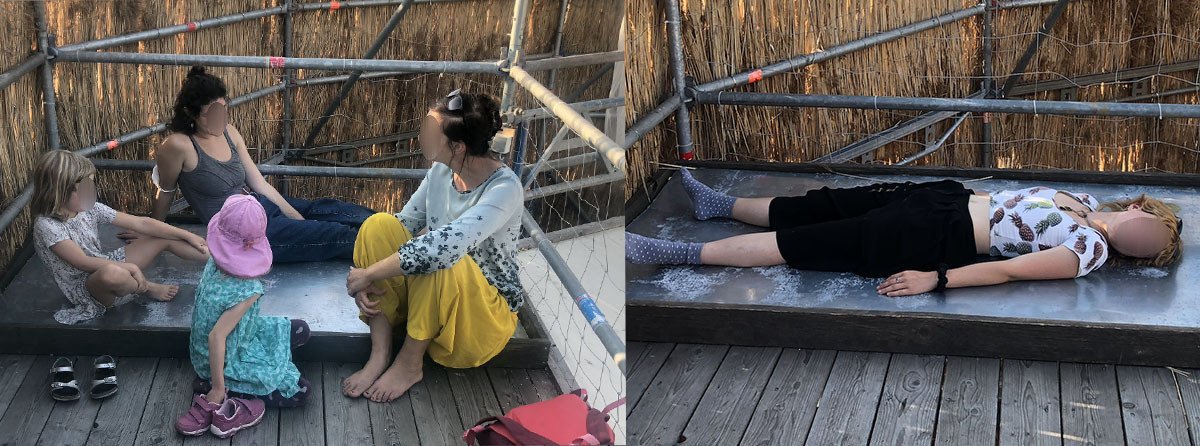c. 250 Hz

Summer 2021, produced in collaboration with beekeeper Lisa Ertl and a colony of honey bees
Floating University, Berlin
Is it possible to cultivate a more-than-human sensory practice? Could certain modes of sensing better attune us to environmental change and species loss, perhaps even fostering more response-able relations with nonhuman entities? Building on these questions, c. 250 Hz is an experiment in more-than-human listening and the limits of translation. Working with a bee colony located at Floating University, c. 250 Hz uses technology to translate vibrational bee communication into a human sensory threshold. Contact microphones pick up vibrations from inside the beehive, which are then transduced into various surfaces around the site, enabling human visitors a chance to feel these signals through touch and physical contact.
Since bees cannot hear airborne sounds, they instead practise ‘non-cochlear listening’ with their bodies. As part of their communication process, bees use their bodies to create vibrations in the material of the hive, which are sensed and then responded to by other bees. c. 250 Hz operates in a similar way, imperfectly translating the bees’ ‘sonic messages’ from the hive’s substrate and into that of Floating University, to be encountered with and through the human visitor’s body.